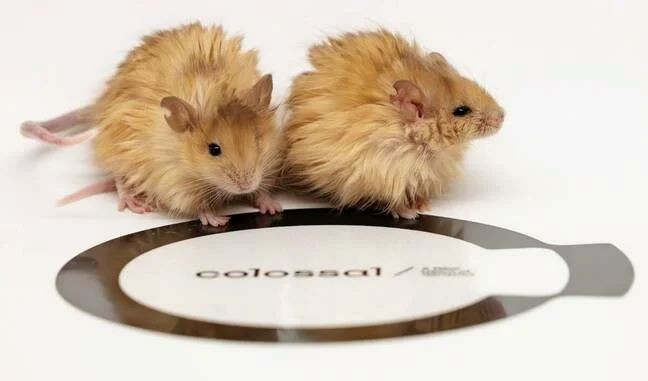Woolly mammoths … Most of the Glacier Age was disappeared about 10 thousand years ago. It is thought that their descendants were completely exhausted about 4 thousand years ago. So, can these close relatives of the elephants come back thousands of years later? US scientists have developed “woolen” mice using the genetic information they have obtained from woolen mammoths and elephants, and they see it as the first step towards the return of a extinct species.
The biotechnology company Colossal Biosciences thinks that he can re -derive mammoths using Asian elephants. This week, the company announced the birth of the ‘woolen mouse’: “A new type of mouse, which has similar features with woolen mammoths, using new gene editing techniques.”
These mice have long, woolen feathers and accelerated fat metabolism that helps survive in the last glacial age instead of classic gray-brown hair.

The genetic engineering company Colossal Biosciences, which successfully changed seven genes at the same time, says that the descended woolen mammoth develops mice with fur color, texture and thickness changed to compliance with the basic phenotypes. The researchers identified 7 genes coding mammoth’s furry fur. In addition, Fur, a gene that granted golden color and another gene that manages lipid metabolism. Approximately 250 embryos were produced during the experiment; 38 mouse puppies were born. Mice seem to have mammoth’s gold, woolen feathers.
Ben Lamm, CEO of the company, thinks it is a ‘turning point’. Lamm says that they have gained the mammoth’s features that provide cold -resistant features through engineering and says, “This success brings us one step closer to our goal of bringing the woolen mammut back.”
Dr. Beth Shapiro, “Colossal woolen mouse, the latest genome editing tools exhibit our ability to use our ability to use.
Will the extinct animals be born again?
The team announced that he used genes identified in the samples taken from 59 mammoth samples between 3,500 and 1,200,000 years. The resulting mice have long brown feathers of the kind we see in the drawings of the mammoths who lived in the prehistoric times, and it seems that this experiment is the beginning of more advanced experiments. The company thinks that many of the animal species that are extinct by developing these studies can bring back to life.
The company says that they will soon try this method on the Mice on the Asian elephants, and if they are successful, they aim to make the first woolen mammoth cub until the end of 2028.
So, what are the comments on this subject? Let’s add it immediately this work has not yet been examined by independent scientists. And there are some discussions.
Asian elephants are also under the threat of extinction. And there are ethical, bureaucratic obstacles in front of experimenting. Secondly, a mammoth is more than the fat structure of the fur. In other words, dozens of different genes need to be designed for a mammoth to come back.
There are different opinions about this study. Some experts are suspected and asks the following question: “If the feather structure of an Asian elephant changes, or if it becomes more resistant to the cold, will it make it a mammoth? Or will you just change the Asian elephant?”
Some experts believe that the study is impressive and can be used in the field of health. So, what do you think?